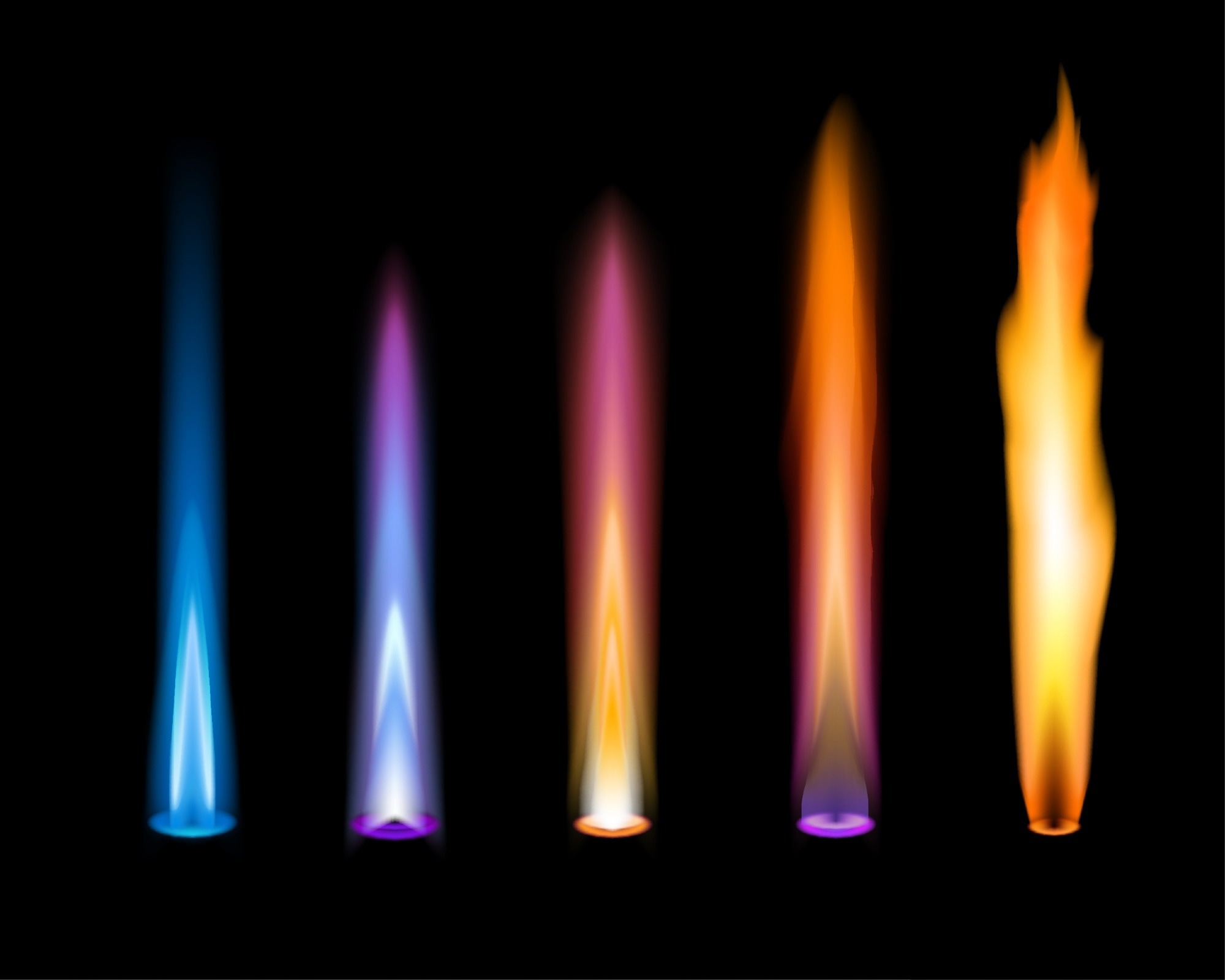Coherent structures can dramatically affect the flame structure and flame release. Hydrodynamic instabilities are stimulated by thermoacoustic oscillations. Studying how coherent oscillations of various amplitudes can affect the development of turbulent flame brush in a bluff body is the main goal of a recent study published in Proceedings of the Combustion Institute.

Study: Impact of turbulence on flame brush development of acoustically excited rod-stabilized flames. Image Credit: Vector Tradition/Shutterstock.com
The researchers examined the coherent oscillations by simulating a strongly linked thermoacoustic instability utilizing peripheral acoustic excitation at the normal frequency of vortex shedding and controlling the turbulence intensity of the turbulent flame. They derived the three-component velocity field using stereoscopic velocimetry and measured the flame edge behavior using Mie-scattering images.
Impact of Coherent Oscillations on Turbulent Flames
The stability and behavior of turbulent flames can be greatly impacted by significant coherent oscillations. Coherent flow oscillations in gas turbine combustors can lead to variations in heat release, resulting in thermoacoustic combustion instability.
Combustion instability can make an engine less effective and, in extreme circumstances, ruin the engine's hardware. It is crucial to comprehend how turbulent flames react to coherent oscillations to design the combustor and use instability mitigation measures.
Coherent vortex shedding is a common indication of naturally occurring variabilities in the flow field and the flow's reaction to external disturbances, both of which can lead to coherent oscillations. The interaction of large-scale vortices with flames can result in wrinkles in the flame front and coherent periodic changes in heat release.
Parameters Affecting the Flame Response
The size and rotational force of the vortex can affect how the flame reacts to a vortical disturbance. The degree of co-location between the turbulent flame and the shear layer where the vortex is created, as well as the density ratio and Lewis number, impact the flame response. The development of the coherent vortices and the dynamics of the turbulent flame (in particular, the kinematic restoration effect produced by flame propagation) are two conflicting factors that control the flame response in acoustically driven flows.
As the vortex expands and contracts in the near-field region, the flame reaction increases linearly, resulting in an escalating flame wrinkle. As the flame reaction declines further downstream due to kinematic restoration, nonlinear behaviors take control. The existence of turbulence influences the coherence of flame wrinkling.
Importance of Coherence Characterization
It is crucial to characterize how stochastic variations in the flow field caused by in-flow turbulence affect the coherent structures and the coherent wrinkling of the turbulent flame generated by coherent structures. The coherent shedding of vortical structures can have a significant impact on the flame.
Being a dynamic interaction between processes of various sizes, the interaction between coherent and stochastic fluctuations is intrinsically complicated—increases in freestream turbulence intensity speed up the disintegration of vortices in non-reacting investigations. Increased freestream turbulence intensity can also reduce the time it takes for vortices to form, which can cause the shear layers to merge into a fully turbulent jet.
Understanding the Impact of Turbulent and Coherent Fluctuations
Turbulence and coherent motions combine to alter the behavior of the flame in reacting and non-reacting flows. Karmarkar et al. comprehended how coherent and stochastic flow variations could affect the flame brush that develops in a rod-stabilized flame. The existence of in-flow turbulence oscillations can interfere with the coherence of the vortex shedding and create variations in the cyclic locations of the flame and the vortex cores, a phenomenon known as "phase jitter."
Both turbulent and coherent variations can have a considerable effect on the stability and dynamics of the flame. By taking into account the effect of turbulence on both the coherent oscillations in the flow and the flame, the researchers evaluated the impact of external acoustic stimuli on the evolution of the turbulent flame brush for varied amounts of in-flow turbulence.
Research Findings
This work examines the relative effects of coherent excitation and in-flow turbulence intensity on the evolution of the turbulent flame brush thickness in a rod-stabilized flame under stoichiometric circumstances. Six excitation amplitudes for each of the two in-flow turbulence regimes, TI = 5% and 11%, were investigated.
Using non-reacting freestream measurements obtained close to the burner output, the researchers quantified the input to the flame and the ratio of coherent-to-stochastic fluctuation amplitudes for both turbulence situations.
The findings demonstrated that the low-turbulence condition had a stronger coherent vortical response than the high-turbulence condition for the same relative input of coherent excitation, as higher levels of in-flow turbulence disturb the coherence of vortices. According to the responding flow results, flame wrinkling was correlated with the strength of the vortices; in settings with higher levels of in-flow turbulence, flame edges are weakly wrinkled compared to those in conditions with lower levels of in-flow turbulence.
Reference
Karmarkar, A., & O’Connor, J. (2022). Impact of turbulence on flame brush development of acoustically excited rod-stabilized flames. Proceedings of the Combustion Institute. https://www.sciencedirect.com/science/article/pii/S1540748922000839.
Disclaimer: The views expressed here are those of the author expressed in their private capacity and do not necessarily represent the views of AZoM.com Limited T/A AZoNetwork the owner and operator of this website. This disclaimer forms part of the Terms and conditions of use of this website.